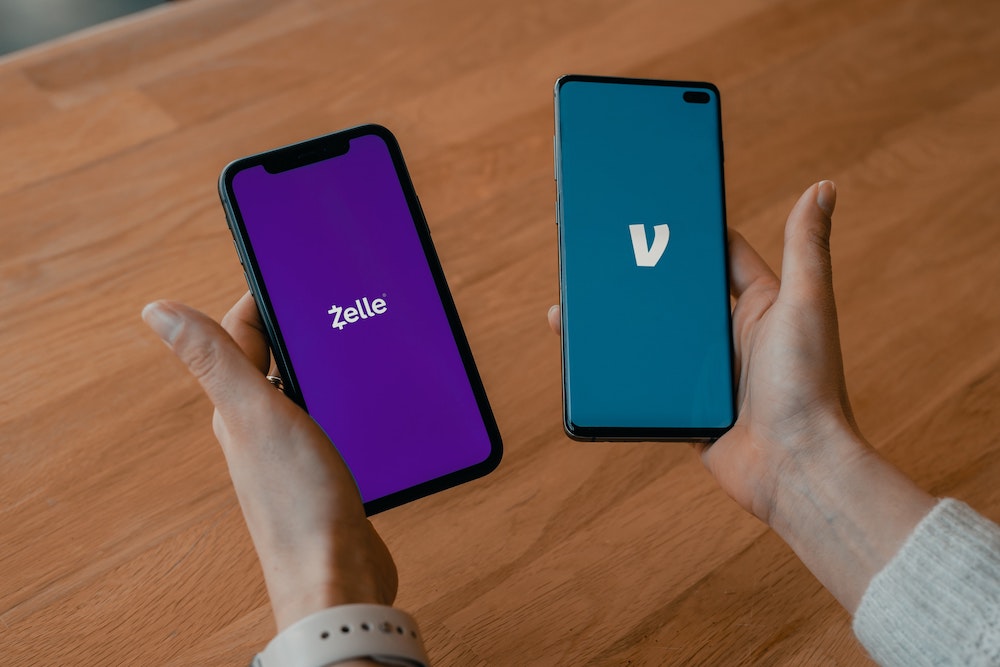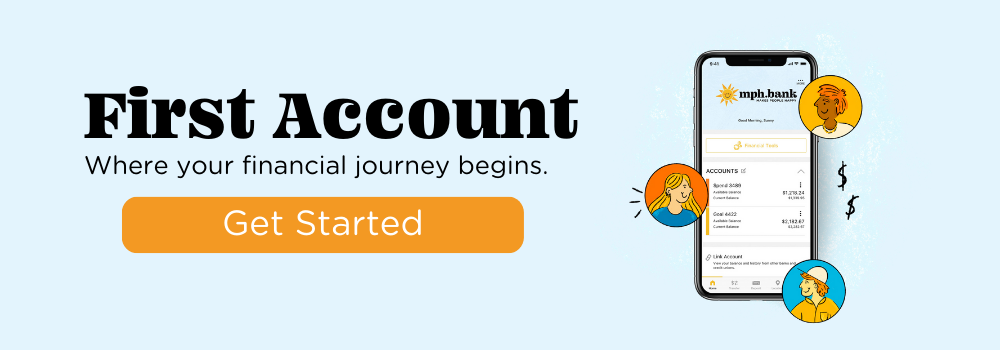According to a report by Global Newswire, the global P2P (P2P) market size is expected to reach over $9,135 billion by 2030. The growing use of the internet for online purchasing is expected to propel the growth.
So, what does this statistic tell us? Generation Z and millennials have embraced P2P transactions and fintech companies will most likely be investing in new and creative ways to support that demand.
Since many players exist in the market, it’s important to do your due-diligence before using P2P transactions. Paypal is perhaps the most dominant player in the market, but there are others like Venmo and Zelle that also offer services that may be a better fit for your needs.
So how do these three online payment services—Paypal, Venmo, and Zelle compare? Find out more below.
Zelle vs. Venmo vs. paypal
Zelle, Venmo, and Paypal are the most popular P2P digital payment apps that allow you to send or receive money online. So you can use either of them to make payments to a friend, family or merchant using your phone or laptop.
Paypal holds the largest share of the P2P industry at 42%, with over 429 million active users. Unlike Paypal, which has users in over 200 countries, Zelle and Venmo are currently supported within the US alone.
The Covid 19 pandemic propelled the surge in P2P transactions. But even before then, many people, especially millennials and generation Z, were already transacting online via Paypal, Zelle, and Venmo, among other P2P apps.
But now that P2P mobile payment services are more popular, many people want to try them but don't know where to start.
When transacting online, the biggest challenge people face is finding a secure and reliable service provider. With rapid technological advancements, anything can happen online.
So, which P2P online payment system should you choose between Paypal, Zelle, and Venmo? Let's weigh the pros and cons of each and let you decide.
What is Zelle?
Zelle is a P2P payment service that allows you to transfer money instantly between US bank accounts. You can use it to send or receive money between individuals. It's easier and safer to use Zelle to make transactions without incurring transaction fees.
Why is Zelle safe?
You don't need your bank account information to transact via Zelle. Instead, you just need your email address or phone number to send or receive money online. Also, Zelle transactions have the same security assurances as all of your other bank activities.
Moreover, Zelle processes transactions within a few minutes. It uses the Automated Clearing House (ACH) payments system to expedite payments between US bank accounts.
Having been launched in 2017, Zelle is the newest network to join the P2P payments world compared to Paypal and Venmo. Several banks in the US, including Bank of America, Chase, Capital One, and Wells Fargo, have backed up Zelle since its launch.
Note: Always use Zelle with people and businesses you know and trust.
How Zelle works
There are two ways users use Zelle. You can either use Zelle directly from their app or through your financial institution.
Note: Users have to access their accounts from one or the other, not both.
Once you're logged in via your bank or mobile app, follow the prompts to enroll your account in Zelle. After that, you can now send or receive money online via the platform.
Why Users Like the App: Users like Zelle for its convenience, speed and ease of use in sending and receiving money to friends, family or anyone with a U.S. mobile number or email address. It is also highly secure and integrated with most major banks, making it a popular option for quick and secure money transfers.
Drawbacks Of the App: Some users have reported that the Zelle app is not always reliable and can experience technical issues such as failed transactions or delays in processing. Additionally, the Zelle app does not have a customer support team available 24/7 and some users have had trouble resolving issues with their account or transactions. Support for Zelle is typically managed by the financial institution you have it set up with. Some users also dislike the lack of features and options compared to other money transfer services.
What is Venmo?
Venmo is a mobile app for P2P money transfers and payments. With the app, you can send money to or request payment from anyone with a Venmo account.
Like Zelle, Venmo only operates in the US. The sender and recipient must be in America to use this P2P payment system.
Venmo works as a digital wallet—you can accrue money in your Venmo account to pay for future purchases. The app also allows users to add emojis and like or comment on their transactions. The interactive social media features are among the reasons most millennials use Venmo.
Moreover, you can use the Venmo app to buy crypto.
How does Venmo work?
You must have an account with Venmo to send or receive money online on the platform. It's free to open a Venmo account, and there are no monthly charges.
Once you receive funds from another Venmo user, you can keep the money in your account for future use or transfer it to a linked bank account.
Additionally, you can add money to your Venmo account from your debit card or bank account.
Venmo charges a 3% per transaction fee for P2P transactions funded by credit card.
Why Users Like the App: Users like Venmo for its social and user-friendly interface. It allows users to easily send and receive money, pay bills, and share payments with friends, family, or anyone with a Venmo account. Venmo also has a feature that allows users to see the transaction history and activity of their friends, adding a social aspect to the experience of using the app.
Venmo is also known for its high level of security, fast transaction processing, and its integration with other apps and services. Additionally, it is widely available and can be used on both iOS and Android devices, making it accessible to a large number of users.
Drawbacks Of the App: Some users do not like Venmo due to its limited options for sending and receiving money. Venmo is primarily a P2P payment platform, so it may not be suitable for larger transactions or business payments. Users have also reported issues with customer service and support when encountering problems with the app.
Some people dislike the fact that Venmo transactions are public by default, which can lead to privacy concerns for users. Venmo also does not insure money kept in the app. If anything were to happen to your funds that were outside of your control, Venmo wouldn’t be liable for reimbursement.
What is Paypal?
Paypal is undoubtedly a huge force in the digital payment scene. This online payment system allows you to send and receive money or pay for things online.
You can link your bank account, credit card, or debit card to your PayPal account to purchase online with participating stores.
Paypal was founded in 1998 and has been in the industry for an extended period compared to Zelle and Venmo. PayPal remains a top choice for money transfers and online shopping.
How does PayPal work?
You must set up a PayPal account to send or receive money on the platform. The good news is that you don't pay a cent to create an account with Paypal.
Moreover, most online purchases and personal transactions are free on Paypal. However, Paypal may charge you on certain transactions.
Paypal offers two accounts: personal and business. Therefore, you must decide on a suitable account based on your transactions or how you intend to use the platform.
Paypal is a secure P2P online platform that ensures merchants don't see your sensitive data. The platform also uses end-to-end data encryption, email confirmations, and optional two-factor account logins to secure your transactions.
Why Users Like the App: Users like PayPal because it provides a fast and convenient way to send and receive money online. It is a highly secure platform with a proven track record for protecting users' personal and financial information. PayPal is widely accepted by online merchants and is also a popular option for online shopping and P2P payments.
PayPal has a large and active user community, which provides access to a wide range of services and support. They offer various features and services, such as the ability to link multiple bank accounts and credit cards, send invoices, and request money from others, making it a versatile and comprehensive payment platform.
Drawbacks Of the App: Some users do not like PayPal because of its fees, which can be higher than other payment options, especially for international transactions. Some users have also reported issues with customer support and resolving disputes or problems with their account.
Some users also dislike PayPal's user agreement and privacy policy, which can be seen as overly restrictive or invasive. It’s also been reported that users have difficulty with the process of linking bank accounts or credit cards, which can be time-consuming and require multiple steps.
Zelle vs. Venmo: Which is More Popular?
When it comes to popularity, which one takes the crown?
Venmo: The Trendsetter
Venmo burst onto the scene in the early 2010s, quickly gaining popularity among millennials and Gen Z users. Its appeal lies not only in its functionality but also in its social aspect. Venmo allows you to add fun emojis, descriptions, and even share your transactions with friends. This social feed has made Venmo a household name for splitting restaurant bills, paying rent, or reimbursing your buddy for that concert ticket.
Venmo's user-friendly mobile app and compatibility with both iOS and Android have contributed to its widespread adoption. You can also link your Venmo account to your debit card or bank account for easy transfers and withdrawals.
But popularity often comes with a price. Venmo charges fees for certain transactions, such as credit card payments or immediate transfers. Additionally, while Venmo offers robust features for personal use, it may not be the go-to choice for businesses or merchants.
Zelle: The Banking Giant's Answer
Zelle, on the other hand, has a slightly different origin story. It's not a standalone app like Venmo but rather a network of major banks and financial institutions. This means that if your bank is part of the Zelle network, you likely already have access to it through your bank's mobile app or website.
Zelle's biggest advantage is its speed and direct integration with your bank account. Transfers via Zelle are typically lightning-fast, often taking just a few minutes to complete. Plus, Zelle doesn't charge fees for standard transactions, making it a cost-effective choice for many users.
However, Zelle's simplicity can also be a limitation. It lacks some of the social features that make Venmo so engaging. You won't find a transaction feed or the ability to comment on payments, which some users enjoy for its social aspect.
So, Who's More Popular?
When it comes to popularity, it's a bit like comparing apples to oranges. Venmo is undoubtedly the more recognized brand, especially among younger users who appreciate its social features. It's the go-to app for splitting bills among friends and sharing the fun along the way.
On the other hand, Zelle, with its backing from major banks and its widespread integration into banking apps, appeals to those who prioritize speed, security, and simplicity in their P2P transactions.
Ultimately, the choice between Zelle and Venmo depends on your personal preferences, banking affiliations, and the features that matter most to you.
Final Thoughts
Paypal, Venmo, and Zelle are currently the three leading players in the world of online peer-to-peer payment services. While Zelle and Venmo are limited to the US market, Paypal stands out as the global leader, allowing transactions in over 200 countries.
So, if you're looking to securely send or receive money or make online payments, you have three powerful options at your disposal: Venmo, Zelle, and Paypal.
At mph.bank, we take pride in offering a seamless and complimentary integration with Zelle across all our account options. Join mph.bank today and embark on your journey towards financial success.
What did one penny say to the other penny?
Let's get together and make some cents! Sign up to receive important information on banking, financial tips, and jokes like this directly to your inbox










